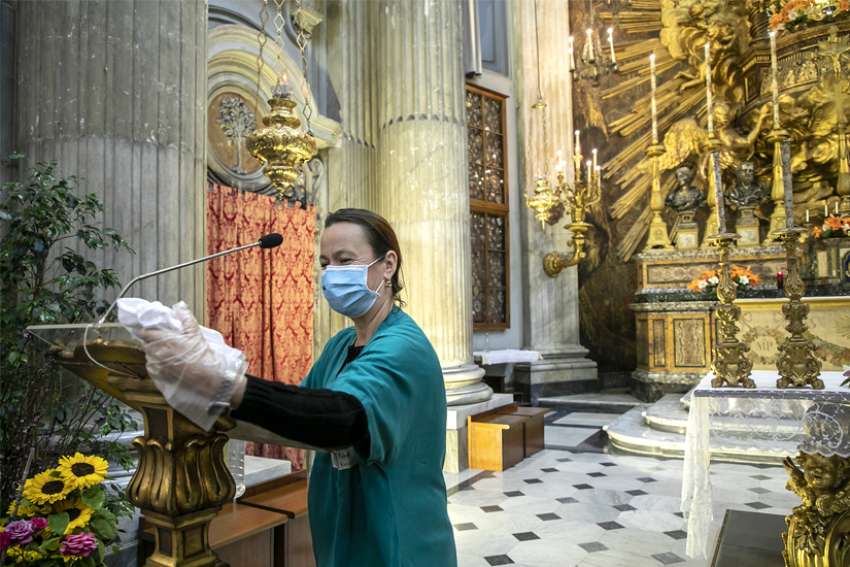And under no circumstances, it said, should a painting or historical document be disinfected.
In a statement published on its website May 20, the council said it distributed the guidelines after some reports that "the necessary disinfection of areas, vestments and sacred vessels for worship has been carried out in some cases using detergents that are not suitable for objects of art and cultural heritage."
The document, it said, was "drawn up not by the Pontifical Council for Culture, but shared by it. It offers simple indications to avoid causing irreversible damage to the most precious and delicate objects present in our churches."
The pontifical council also recommended "that priests or those in charge of the churches make contact with the cultural heritage specialists in their diocese or competent civil authorities, especially in the most delicate cases."
The guidelines detail specific instructions for antique furniture, sacred vessels, liturgical garments, as well as the disinfection of church buildings, offices, floors, pavements and other objects, such as handrails, doorknobs and benches.
According to the guidelines, using corrosive products such as bleach, ammonia and detergents can leave "harmful residues" and "should not be used on monumental complexes, historical buildings, archaeological sites, objects, movable heritage, fabrics, embroidery, etc."
Instead, the norms advise the use of "diluted hydro-alcoholic solutions or neutral soaps," and to follow the recommendations of health authorities and the guidance of competent technicians.
"We must not forget that cultural heritage is a nonrenewable asset, and therefore every action that may affect its state of conservation must be properly known, assessed, documented and agreed upon with experts," the guidelines stated.
However, it said, if items prove too delicate for disinfectant products, the most appropriate means to prevent the spread of viruses "would always be to isolate them for periods of time that vary from 9 to 14 days, according to the indications of virologists. But above all and most importantly, common sense must prevail."


